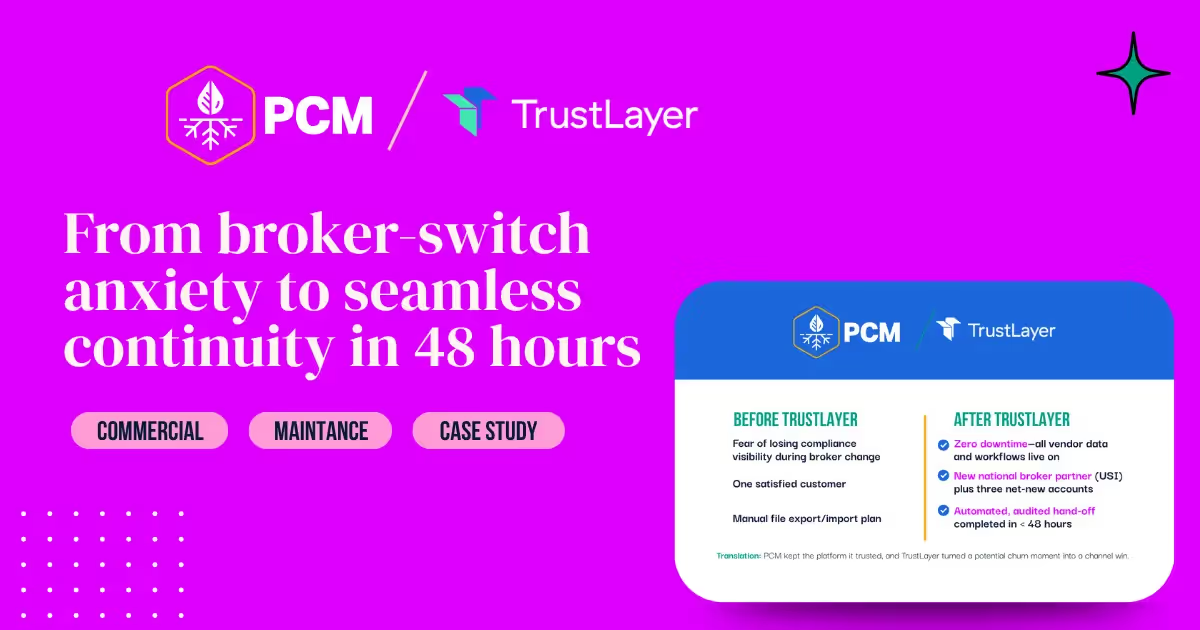Using Certificate of Insurance Tools to Streamline Your Insurance Process

In today's fast-paced business world, efficiency is key. Every minute counts, and wasting time on manual tasks can be detrimental to your success. One area where efficiency is often overlooked is the insurance process. From managing certificates of insurance to ensuring compliance, the administrative burden can be overwhelming. Fortunately, there are certificate of insurance tools available that can streamline this process and save you valuable time and resources.
Understanding the Importance of Insurance Certificates
Before diving into the world of certificate of insurance tools, it's crucial to understand the importance of insurance certificates themselves. A certificate of insurance is a document that serves as proof of insurance coverage. It outlines the key details of an insurance policy, such as the policyholder's name, policy limits, and coverage effective dates. This document is essential for businesses engaging in various activities, as it demonstrates their compliance with insurance requirements.
Insurance certificates play a vital role in the business world, providing peace of mind and protection for all parties involved. They serve as tangible evidence that a business has taken the necessary steps to safeguard against potential risks and liabilities. Without insurance certificates, businesses may find themselves at a disadvantage, facing legal and financial consequences if accidents or unforeseen events occur.
What is a Certificate of Insurance?
A certificate of insurance is a standardized document that summarizes the key details of an insurance policy. It provides third parties, such as clients or business partners, with a snapshot of the policyholder's insurance coverage. This document typically includes information on the types of coverage, policy limits, and the insurance company's contact details.
When a business presents a certificate of insurance, it offers reassurance to others that they have taken proactive measures to mitigate potential risks. This document acts as a bridge of trust between parties, ensuring that all involved are protected in the event of accidents, damages, or other unforeseen circumstances.
Why is a Certificate of Insurance Necessary?
The importance of a certificate of insurance cannot be overstated. It serves as a crucial risk management tool, protecting both the policyholder and any third parties involved. By providing proof of insurance coverage, a certificate of insurance assures clients and partners that a business has the necessary protection in place. It is often required when entering into contracts or working on large projects where liability is a concern.
For businesses, having a certificate of insurance is not just a legal requirement but also a strategic advantage. It enhances their reputation and credibility, making them more attractive to potential clients and partners. It demonstrates that the business takes risk management seriously and is committed to fulfilling its obligations.
Moreover, a certificate of insurance acts as a safeguard against potential lawsuits and financial burdens. In the unfortunate event of an accident or damage, having proper insurance coverage can provide the necessary funds to cover any costs and prevent significant financial setbacks for the business.
Overall, a certificate of insurance is a crucial document that businesses should prioritize obtaining. It offers protection, peace of mind, and a competitive edge in the ever-evolving business landscape.
Exploring Different Certificate of Insurance Tools
Now that you understand the significance of insurance certificates, let's explore the various tools available to streamline the certificate management process.
Managing certificates of insurance can be a complex task, but with the right tools, it can become a seamless and efficient process. In this article, we will delve deeper into the features of effective insurance tools and highlight some of the top certificate of insurance tools in the market.
Features of Effective Insurance Tools
When searching for the right certificate of insurance tool, there are several key features to consider. Firstly, look for a tool that allows for easy creation and distribution of certificates. It should automate the process, reducing the time and effort required to generate and deliver certificates. This automation can save businesses valuable time and resources, allowing them to focus on other critical tasks.
Additionally, a good tool should provide a centralized database for storing and managing certificates, making it effortless to retrieve and update information as needed. Having a centralized database eliminates the need for manual record-keeping and reduces the risk of errors or misplaced certificates. This feature ensures that businesses can access the necessary information promptly and accurately whenever required.
Furthermore, an effective insurance tool should offer robust reporting capabilities. It should allow users to generate comprehensive reports on certificates, including their expiration dates, coverage limits, and any additional endorsements. These reports can help businesses stay organized and ensure that they are always in compliance with their insurance requirements.
Top Certificate of Insurance Tools in the Market
With numerous certificate of insurance tools available, it can be challenging to choose the right one for your business. However, some tools stand out due to their user-friendly interfaces, robust features, and positive user feedback.
One such tool is TrustLayer, an industry-leading solution that simplifies the insurance certificate management process. TrustLayer automates certificate tracking, verifies compliance, and ensures transparency between parties. Its user-friendly interface makes it easy for businesses to create, distribute, and manage certificates seamlessly. With TrustLayer, businesses can streamline their certificate management process and reduce the risk of non-compliance or missed deadlines.
Another popular tool in the market is InsureCert, which offers a comprehensive suite of features to streamline certificate management. InsureCert provides businesses with the ability to generate certificates quickly and accurately, eliminating the need for manual data entry. It also offers advanced search and filtering options, making it effortless to locate specific certificates or information within the database. Additionally, InsureCert integrates with other insurance systems, allowing for seamless data sharing and synchronization.
Lastly, CertFocus is another notable certificate of insurance tool that provides businesses with a centralized platform for managing certificates. CertFocus offers automated certificate tracking, ensuring that businesses are always aware of their certificate status and expiration dates. It also provides real-time notifications and alerts, allowing businesses to take immediate action when necessary. CertFocus's intuitive interface and robust features make it a popular choice among businesses looking to streamline their certificate management process.
In conclusion, choosing the right certificate of insurance tool is crucial for businesses looking to streamline their certificate management process. By considering the key features and exploring the top tools available in the market, businesses can find a solution that best fits their needs and ensures compliance with insurance requirements.
How to Streamline Your Insurance Process with Tools
Now that you have a better understanding of the importance of insurance certificates and the available tools, let's dive into how you can streamline your insurance process.
Managing insurance can be a complex and time-consuming task. However, with the right tools at your disposal, you can simplify and automate many aspects of the process. By leveraging insurance tools, you can save valuable time, reduce errors, and ensure compliance with your insurance requirements.
Step-by-Step Guide to Using Insurance Tools
Implementing insurance tools into your workflow is a straightforward process. First, identify your specific needs and goals. Determine what tasks you want to automate or simplify using the tool. For example, you may want to streamline the process of generating insurance certificates or tracking their status in real time.
Next, choose the right tool that aligns with your requirements. There are various insurance tools available in the market, each offering different features and functionalities. Conduct thorough research and select a tool that best suits your needs.
Once you have selected a tool, follow the provided instructions for setup and installation. Most tools offer user-friendly interfaces and intuitive workflows, making the setup process seamless. Import your existing insurance data into the tool's database, ensuring all necessary information is accurately entered. This step is crucial for a smooth transition to the new tool.
Finally, start utilizing the features of your chosen tool. Generate certificates effortlessly, track their status in real time, and distribute them to relevant parties with just a few clicks. With the right tool, your insurance process will be streamlined, efficient, and stress-free.
Moreover, insurance tools often come with additional benefits such as automated reminders for policy renewals, document storage, and easy access to historical data. Take advantage of these features to further enhance your insurance management process.
Tips for Maximizing the Use of Insurance Tools
While insurance tools can significantly improve your workflow, there are some additional steps you can take to maximize their benefits. Regularly update your insurance information within the tool to ensure accuracy and compliance. By keeping your data up to date, you can avoid any potential issues or discrepancies.
Schedule periodic reviews to identify any coverage gaps or upcoming policy renewals. Insurance needs can change over time, and it's essential to reassess your requirements regularly. By conducting these reviews, you can ensure that you have adequate coverage and avoid any potential gaps in your insurance protection.
Furthermore, take advantage of any training or support resources provided by the tool's developer. Familiarize yourself with all the features and functionalities of the tool to make the most out of its capabilities. This will enable you to streamline your insurance process even further and unlock the full potential of the tool.
In conclusion, insurance tools offer a wide range of benefits for streamlining your insurance process. By following the step-by-step guide and implementing the tips mentioned above, you can effectively leverage these tools to save time, reduce errors, and ensure compliance with your insurance requirements. Embrace the power of technology and simplify your insurance management today!
The Impact of Streamlined Insurance Processes on Your Business
By adopting certificate of insurance tools and streamlining your insurance processes, your business stands to gain several advantages.
Saving Time and Resources with Streamlined Processes
Manual management of certificates of insurance can be time-consuming and prone to errors. By automating this process, you save valuable time and resources that can be better allocated to other critical business tasks. Additionally, the efficiency gained from streamlined processes allows for faster response times, improving customer satisfaction and boosting your overall productivity.
Enhancing Compliance and Risk Management
Compliance with insurance requirements is vital for both legal and reputational reasons. By using certificate of insurance tools, you can easily track and verify compliance, ensuring all necessary documentation is in place to mitigate risks. Through automated reminders and alerts, you'll never miss a policy renewal or expiration date, reducing the potential for gaps in coverage and potential legal issues.
Case Studies of Successful Insurance Process Streamlining
Company A’s Success Story
Company A, a leading construction company, struggled with managing a large volume of certificates of insurance manually. The administrative burden was overwhelming and led to delays in projects and increased compliance risks.
However, after implementing TrustLayer, an all-in-one certificate of insurance management tool, Company A experienced a significant transformation. With automated certificate generation and streamlined tracking, they were able to save up to 40% of the time previously spent on manual processes. Delays were eliminated, compliance improved, and their overall efficiency soared.
How Company B Improved Their Insurance Process
Company B, a growing technology startup, faced similar challenges in managing insurance certificates. Their manual approach resulted in lost certificates, outdated information, and constant back-and-forth communication with clients.
Upon adopting TrustLayer, Company B's insurance process was revolutionized. The tool's centralized database ensured up-to-date and easily accessible certificates, eradicating the need for manual searches. This streamlined process saved Company B countless hours, improved client relationships, and enhanced their overall brand reputation.
As you can see from these case studies, implementing certificate of insurance tools can have a profound impact on your business's efficiency and success.
Conclusion
In today's fast-paced business world, efficiency is vital. By utilizing certificate of insurance tools, you can streamline your insurance process, save valuable time and resources, ensure compliance, and minimize risks. Whether it's automating certificate generation, tracking, or verifying compliance, these tools simplify and enhance your insurance management workflow.
Among the top certificate of insurance tools in the market, TrustLayer stands out as an industry-leading solution. Its user-friendly interface, robust features, and positive user feedback make it a preferred choice for businesses looking to streamline their insurance processes.
So why wait? Begin your journey to a more efficient insurance process today with certificate of insurance tools and experience the transformative power that they bring to your business.
















